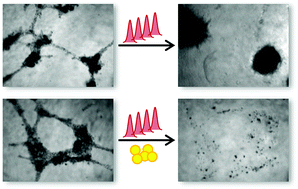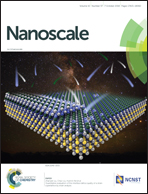Plasmonic targeting of cancer cells in a three-dimensional natural hydrogel†
Abstract
Using specifically designed gold nanoparticles and local laser irradiation, individual cells and small cell clusters could be targeted on a microscopic scale with minimal toxicity to nearby tissue. To date, most scientific studies and technological demonstrations of this approach were conducted on two-dimensional cultures, while most feasibility tests and preclinical trials were conducted using animal models. For bridging the gap between two-dimensional cell cultures and animal experiments, we propose and demonstrate the use of a natural hydrogel for studying the effect of intense, ultrashort laser pulses on a gold nanoparticle targeted tissue. Using illumination parameters comparable to those used with two-dimensional cultures, we show the complete eradication of multilayered cell colonies comprising normal fibroblasts and malignant epithelial cells co-cultured on a hydrogel scaffold. By evaluating the extent of cell damage for various pulse durations at off-resonance irradiation, we find that the observed damage mechanism was dominated by rapid thermal transitions around the gold nanospheres, rather than by photoionization. The work provides a new tool for understanding the complex pulse–particle–tissue interactions and demonstrates the important role of nanoparticle mediated cavitation bubbles in a thick, multilayered tissue.



 Please wait while we load your content...
Please wait while we load your content...